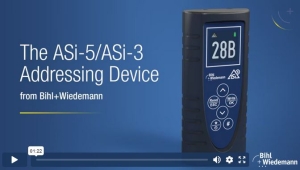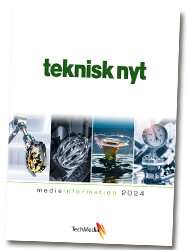The Modern ASi-5/ASi-3 Address Programming Device – Designed for all ASi Generations
The Contemporary ASi Address Programming Device
ASi-5 is the latest development stage of AS-Interface. For this application, we now provide our modern ASi-5/ASi-3 address programming device (BW4708). Just as with our ASi-5/ASi-3 Gateways, we focus on full compatibility. This means: You can use the new addressing device for all ASi-5 as well as for all ASi-3 modules – while maintaining a uniform workflow.
Even if you don’t have ASi-5 modules in use yet, you will still profit from advanced product features: an OLED color display, a bulit-in supercapacitor (for powerful energy storage) and simple PC connection via a standard USB-C connection. It also enables seamless integration into the Bihl+Wiedemann Software Suite.
Count on a powerful combination when commissioning your ASi system: Using the handy ASi-5/ASi-3 address programming device together with the Bihl+Wiedemann Software Suite, you combine the advantages of decentralized (bottom-up) addressing with those of centralized (top-down) planning and parameterization.
How do You Use the ASi-5/ASi-3 Address Programming Device Optimally?
For easy and safe commissioning of your ASi system, it is recommended to use our intuitive, sophisticated ASIMON360 software in conjunction with the modern ASi-5/ASi-3 address programming device – even if you do not wish to use ASi-5 modules at present. The typical procedure is as follows:
- First plan the network in the hardware configuration section of ASIMON360 or ASi Control Tools360. You can also make all the individual settings for each device separately.
- In the second step, set the ASi addresses (ASi-3) and participant numbers (ASi-5) individually at the respective modules on site using the addressing device. Then you can connect all devices to the ASi Master.
- Finally, start the commissioning wizard. The devices are then all automatically fully configured and receive all other settings that were initially specified in the hardware configuration section.



